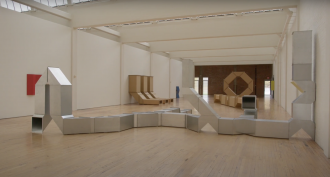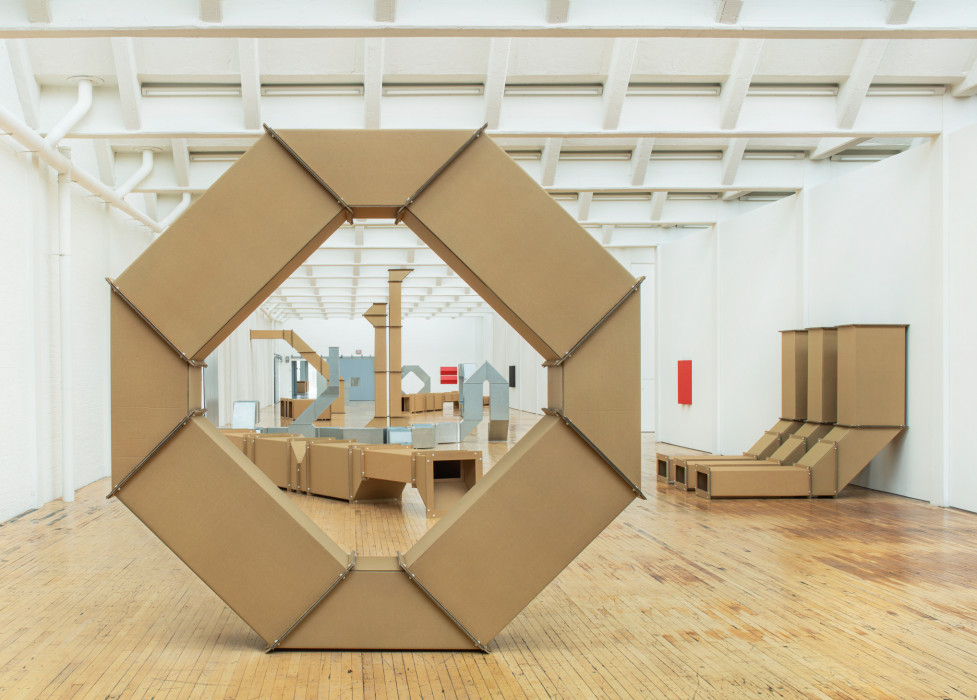Charlotte Posenenske
March 26, 2021–June 4, 2023, Dia Beacon
Overview
Before turning away from art production in 1968 in favor of a career in sociology, Charlotte Posenenske exhibited widely alongside peers such as Hanne Darboven, Donald Judd, and Sol LeWitt, with whom she shared an interest in seriality. However, her work is distinguished by its radically open-ended nature. Embracing reductive geometry, repetition, and industrial fabrication, she developed a form of mass-produced sculptural Minimalism that addressed the pressing socioeconomic concerns of the decade by circumventing the art market and rejecting established formal and cultural hierarchies. Posenenske employed playful conceptual devices to oppose compositional hierarchy and invite the collaborative engagement of the public in the continual reconfiguration of her variable sculptures.
Following the major 2019 exhibition at Dia Beacon, Charlotte Posenenske: Work in Progress, this display consists of a number of works subsequently acquired by Dia, shown in an entirely new configuration. Spanning one of the largest galleries at Dia Beacon and shown in close proximity to collection-based displays of contemporaneous German artists Imi Knoebel and Franz Erhard Walther, this presentation expands the narrative of this period of art in Germany.
Charlotte Posenenske is made possible in part by support from Berta Fischer and Konrad Fischer Galerie and Peter Freeman, Inc.
Charlotte Posenenske developed a radically democratic model of art making between 1956 and 1968. Her sculptures span cardboard and aluminum wall reliefs, interactive cubic structures, and modular geometric units whose installation invites collective decision making. They are fabricated in unlimited series and sold at a relatively low price, which is tied to the cost of production rather than the speculative commercial viability that normally determines art’s price on the market. These decisions were intended to subvert the artwork’s status as a specialized and rarefied commodity. In 1968, after producing five series of serial objects over a roughly two-year period, Posenenske published a statement proposing that art could not sufficiently address pressing social issues, particularly in relation to the Vietnam War; the passage in May 1968 of the German Emergency Acts, which placed limits on constitutional freedoms; and other issues central to the international student protest movement taking place at the time. She later turned her attention to the study of sociology, publishing a doctoral thesis in 1979 that critiques the Taylorist optimization of factory labor based on workers’ body movements, which, Posenenske argued, rationalized the capitalist exploitation of labor. Prior to her death in 1985, the artist authorized the renewed fabrication of her serial sculptures, which is now overseen by her estate.
In keeping with the egalitarian and participatory ethos of Posenenske’s work, the installation on view was designed through the collaborative effort of twenty participants, each of whom attended earlier workshops held in conjunction with the artist’s 2019 retrospective at Dia Beacon. Over the course of two workshops—one held in-person at the museum, the other remotely over video conference—the participants used scaled-down paper models of Posenenske’s modules to design the sculptural combinations included in this installation. These configurations were then further interpreted and manipulated by Dia’s exhibitions team. Participants included Mira Dayal, Christina Delius, Charlotte Foley, Laura Genes, Eva Jespersen, Nicole Kaak, Stephen Kwok, Birgit Larson, Mollie McKinley, Tongji Philip Qian, Quinn Schoen, Yoshihiro Sergel, and Carrie Schneider; as well as Valerie Chang, Matilde Guidelli-Guidi, Alexis Lowry, Meagan Mattingly, Daniel Oates-Kuhn, Ian Wallace, and Alex Vargo from Dia’s staff. Members of Dia’s exhibition team who worked on this installation are Peter Acheson, Heidie Gianotti, Brian Higbee, Ted Kersten, Colin O’Con, Aaron Sinift, and Oliver Terry.
Posenenske’s Vierkantrohre Serie D (Square Tubes Series D) (1967/2018) includes six individual steel-sheet elements: three basic tubes—square, rectangular, and cubic—and three connecting pieces that allow the tubes to be attached to one another in various ways. The latter group includes an angular piece for creating corners; a transition piece, which modulates between the tubes’ square and rectangular openings; and a T-shaped part that allows for three-way connections between elements. The four elements included in Vierkantrohre Serie DW (Square Tubes Series DW) (1967/2018)—including square, rectangular, angular, and transition pieces—are made from corrugated cardboard at a slightly larger in scale than their metal counterparts. In the brief period before she abandoned art, Posenenske installed both Series D and DW in traffic junctions and airports around Frankfurt, deliberately displaying the work in social hubs rather than traditional gallery spaces. The ways in which the sculptures engage their environment is a crucial element of the work, and she originally planned to fabricate the modules at a much larger scale so that they might be entered and traversed as a kind of prefabricated architecture.
During her relatively brief artistic career, Posenenske’s work was shown alongside that of American Minimalists Carl Andre, Donald Judd, and Sol LeWitt, among others. Her practice, however, is distinguished by both her work’s radically open-ended nature and the ways in which it reflects concerns particular to West Germany at the end of the 1960s. At that juncture, the market for contemporary art was booming. Pop and Minimal art were introduced from the United States and the first contemporary art fair, Kunstmarkt Cologne, took place in 1967. Thanks, in part, to the economic policies of the Wirtschaftswunder—the “economic miracle” ushered in by West German chancellor Konrad Adenauer following the devastation of World War II—living standards and the availability of consumer goods in West Germany rapidly increased. By fixing the price of her work to the cost of production and delegating creative control to her works’ “consumers,” Posenenske hoped to regulate the increasing commodification of contemporary art and artistic personae.1 Her approach applies the industrial concept of Rationalisierung (rationalization)—which refers to streamlining the design process to optimize efficiency and functionality—to art making.
1 Charlotte Posenenske, “Statement,” in Art International 12, no. 5 (May 1968): p. 50.
—Ian Wallace, 2020–21 Andrew W. Mellon curatorial fellow
Support provided by Bloomberg Philanthropies
Production by Northguild
Cinematography by Chris Rahm
Camera Assistance by Kashka Glowacka
Edited by Devin Pickering and Chris Rahm
Music: Emily A. Sprague, “Moon View,” from Hill, Flower, Fog (2020). Courtesy RVNG Intl., by arrangement with Terrorbird Media
Dia Art Foundation Staff
Producers: Katherine Ellis and Dan Wolfe
Copyediting: Kamilah N. Foreman
Rights and Reproductions: Jenn Kane
Curator: Alexis Lowry
Communications Director: Hannah Gompertz
© 2022 Dia Art Foundation
All works by Charlotte Posenenske © 2022 Estate of Charlotte Posenenske
Charlotte Posenenske was born in 1930 in Wiesbaden, Germany. In the early 1950s she studied art in Stuttgart and worked as a costume and set designer for regional theaters in Lübeck and Darmstadt. Following experimentation with mark-making techniques and mural commissions, Posenenske began to devise wall structures that occupy the threshold between painting and sculpture. In 1967 she started mass producing modular and reproducible sculptural units with a variety of preset characteristics and standard measurements. During this period, solo exhibitions of her work were presented at innovative German galleries, such as Galerie Dorothea Loehr in Frankfurt (1966 and 1968), Galerie h in Hannover (1967), and Kleine Galerie in Schwenningen (1967). She also participated in Serielle Formationen at Johann Wolfgang Goethe Universität Studiogalerie in Frankfurt (1967); Dies alles, Herzchen, wird einmal dir gehören at Galerie Dorothea Loehr (1967); and ABC Art, Cool Art, Minimum Art, Minimal Art, Primary Structure, Neue Monumente, IMI Art at Galerie René Block in Berlin (1968), among other group exhibitions. Posenenske stopped making art altogether in 1968 and dedicated herself to the study of the sociology of labor. Since her death in 1985, her work has gained renewed attention through presentations at Museum für moderne Kunst, Frankfurt (1990); Documenta, Kassel (2007); Museum of Modern Art, New York (2009); Artists Space, New York (2010); and São Paulo Biennial (2012). Charlotte Posenenske: Work in Progress (2019) at Dia Beacon was the first major North American retrospective dedicated to her work.
.jpg)
All works courtesy Dia Art Foundation; Partial gift of VIA Art Fund
1. Reliefs Serie C (Reliefs Series C), 1967/2018
RAL spray paint on sheet aluminum; 2 units
2. Reliefs Serie B (Reliefs Series B), 1967/2008–11
RAL spray paint on sheet aluminum; 3 units
3. Vierkantrohre Serie DW (Square Tubes Series DW), 1967/2018
Cardboard; 8 units
4. Vierkantrohre Serie DW (Square Tubes Series DW), 1967/2018
Cardboard; 10 units
5. Vierkantrohre Serie DW (Square Tubes Series DW), 1967/2018
Cardboard; 12 units
6. Reliefs Serie B (Reliefs Series B), 1967/2018
RAL spray paint on sheet aluminum; 2 units
7. Reliefs Serie C (Reliefs Series C), 1967/2018
RAL spray paint on sheet aluminum; 2 units
8. Vierkantrohre Serie D (Square Tubes Series D), 1967/2018
Galvanized sheet steel and screws; 45 units
9. Vierkantrohre Serie DW (Square Tubes Series DW), 1967/2018
Cardboard; 10 units
10. Reliefs Serie B (Reliefs Series B), 1967/2018
RAL spray paint on sheet aluminum; 2 units
11. Vierkantrohre Serie DW (Square Tubes Series DW), 1967/2018
Cardboard; 3 units
12. Vierkantrohre Serie D (Square Tubes Series D), 1967/2018
Galvanized sheet steel and screws; 12 units
13. Vierkantrohre Serie DW (Square Tubes Series DW), 1967/2018
Cardboard; 15 units
14. Vierkantrohre Serie DW (Square Tubes Series DW), 1967/2018
Cardboard; 6 units
15. Reliefs Serie B (Reliefs Series B), 1967/2018
RAL spray paint on sheet aluminum; 2 units
16. Vierkantrohre Serie D (Square Tubes Series D), 1967/2018
Galvanized sheet steel and screws; 4 units
17. Vierkantrohre Serie D (Square Tubes Series D), 1967/2018
Galvanized sheet steel and screws; 8 units
18. Reliefs Serie B (Reliefs Series B), 1967/2018
RAL spray paint on sheet aluminum; 2 units
Artist
Charlotte Posenenske
Charlotte Posenenske was born in Wiesbaden, Germany, in 1930. She died in Frankfurt in 1985.
Selected Works on View
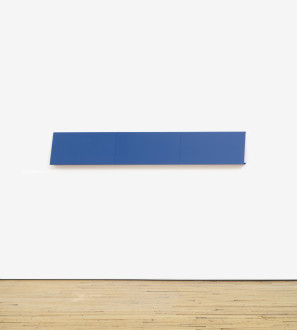
Charlotte Posenenske
Series B Reliefs, 1967/2008–11
Go to Series B Reliefs page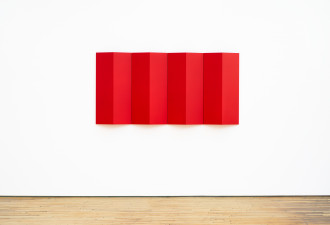
Charlotte Posenenske
Series B Reliefs, 1967/2008–11
Go to Series B Reliefs page
Charlotte Posenenske
Series B Reliefs, 1967/2018
Go to Series B Reliefs page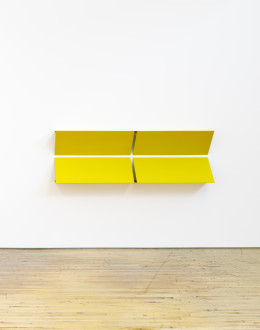
Charlotte Posenenske
Series C Reliefs, 1967/2018
Go to Series C Reliefs page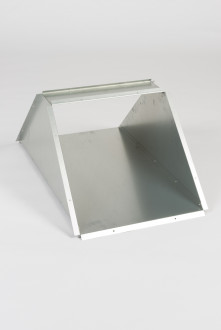
Charlotte Posenenske
Series D Vierkantrohre (Square Tubes) [Angular pieces], 1967/2018
Go to Series D Vierkantrohre (Square Tubes) [Angular pieces] page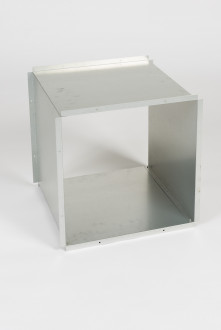
Charlotte Posenenske
Series D Vierkantrohre (Square Tubes) [Cubic tubes], 1967/2018
Go to Series D Vierkantrohre (Square Tubes) [Cubic tubes] page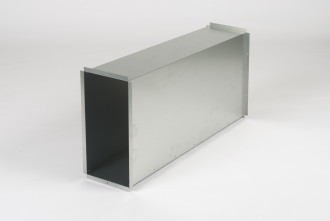
Charlotte Posenenske
Series D Vierkantrohre (Square Tubes) [Rectangular tubes], 1967/2018
Go to Series D Vierkantrohre (Square Tubes) [Rectangular tubes] page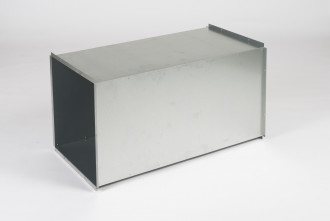
Charlotte Posenenske
Series D Vierkantrohre (Square Tubes) [Square tubes], 1967/2018
Go to Series D Vierkantrohre (Square Tubes) [Square tubes] page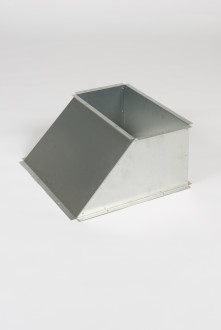
Charlotte Posenenske
Series D Vierkantrohre (Square Tubes) [Transition pieces], 1967/2018
Go to Series D Vierkantrohre (Square Tubes) [Transition pieces] page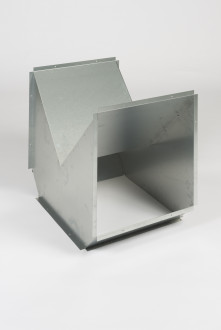
Charlotte Posenenske
Series D Vierkantrohre (Square Tubes) [T-pieces], 1967/2018
Go to Series D Vierkantrohre (Square Tubes) [T-pieces] page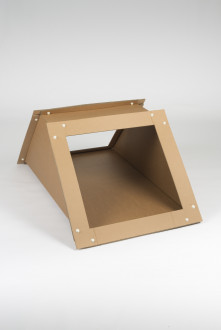
Charlotte Posenenske
Series DW Vierkantrohre (Square Tubes) [Angular pieces], 1967/2018
Go to Series DW Vierkantrohre (Square Tubes) [Angular pieces] page
Charlotte Posenenske
Series DW Vierkantrohre (Square Tubes) [Rectangular tubes], 1967/2018
Go to Series DW Vierkantrohre (Square Tubes) [Rectangular tubes] page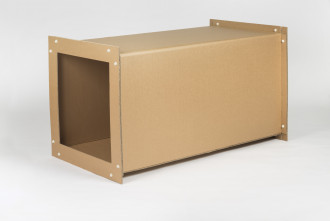
Charlotte Posenenske
Series DW Vierkantrohre (Square Tubes) [Square tubes], 1967/2018
Go to Series DW Vierkantrohre (Square Tubes) [Square tubes] page
Charlotte Posenenske
Series DW Vierkantrohre (Square Tubes) [Transition pieces], 1967/2018
Go to Series DW Vierkantrohre (Square Tubes) [Transition pieces] pageExplore
